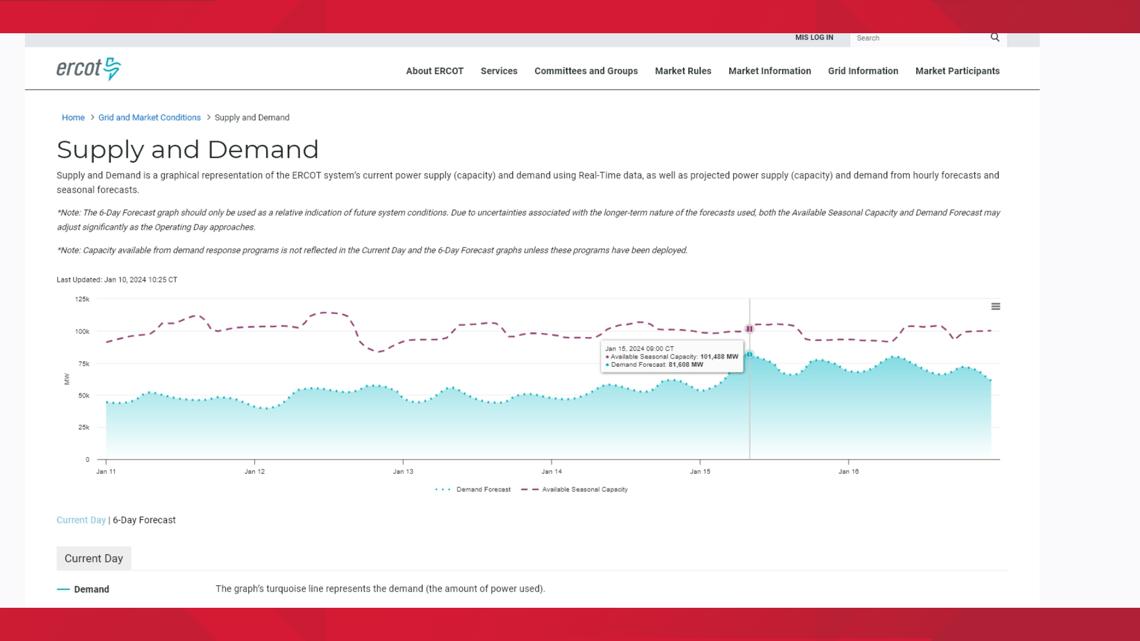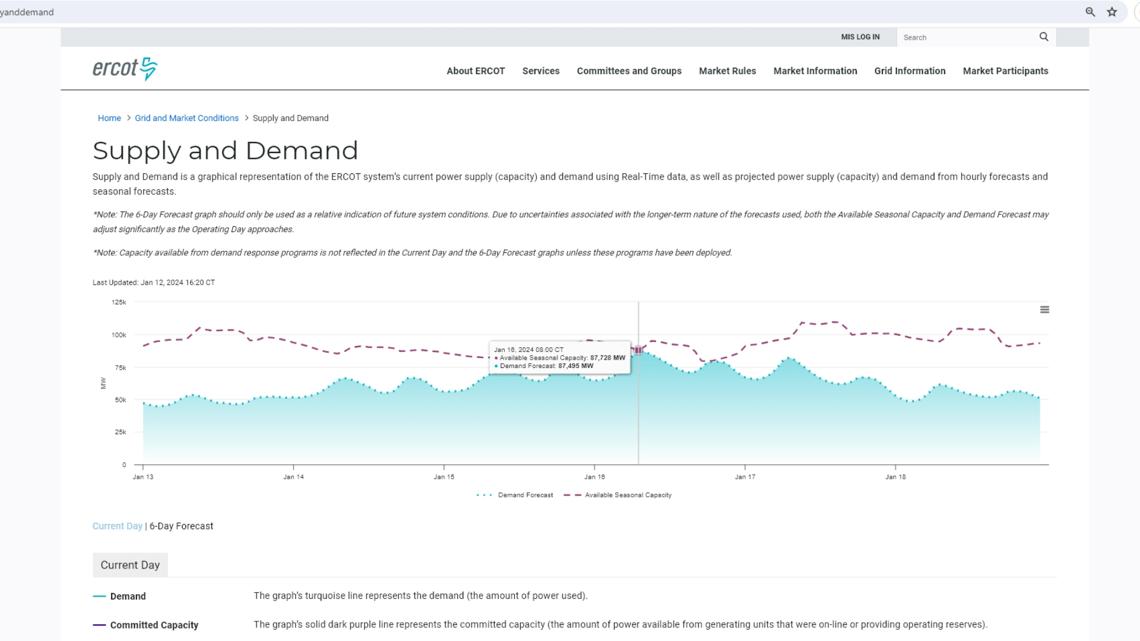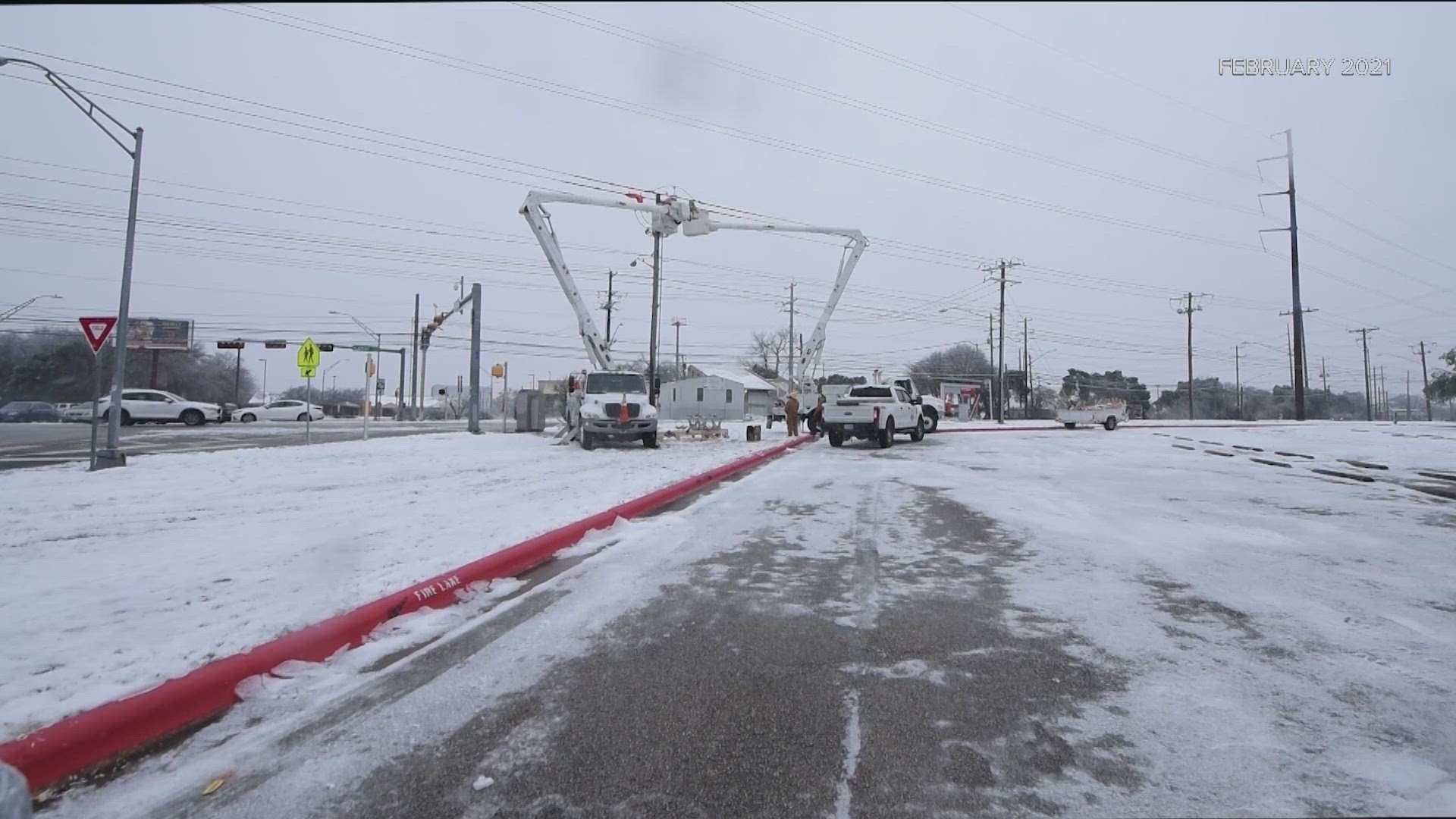AUSTIN, Texas — As freezing weather approaches Texas, the power grid manager covering the majority of the state continues to adjust expectations. The adjustments seem to show electricity supply and demand separation shrinking.
On Jan. 10, the Electric Reliability Council of Texas (ERCOT) projected the peak demand would be 81,608 megawatts and supply of more than 101,000 megawatts for 9 a.m. on Jan. 15.


One megawatt can power about 200 homes, ERCOT records show.
As the weather forecast adjusted, so did the ERCOT projection.
As of Jan. 12, the peak demand is forecasted to be at 8 a.m. on Jan. 16 at 87,495 with supply at 87,728 megawatts. If the gap was as narrow as 233 megawatts, ERCOT would enter into emergency alerts.
ERCOT’s Monthly Outlook for Resource Adequacy (MORA) for Jan. 2024 shows a 16.77% chance of ordering rolling blackouts at 78,307 megawatts.


“ERCOT currently has about 2,500 MW of additional capacity available when it enters emergency conditions,” the ERCOT 2023-2024 Energy Emergency Alert Overview shows.
ERCOT also revised an earlier Weather Watch to include Jan. 14.
“The ERCOT Weather Watch, now from January 14-17, was issued due to extreme cold weather across the ERCOT region, higher electrical demand, and the potential for lower reserves. Grid conditions are expected to be normal,” the notice shows.


The last time ERCOT called for rolling blackouts was February 2021. Millions of people lost power, and hundreds died.
The storm led to changes in the way the power grid is regulated and managed. Those changes include mandated weatherization for entities responsible for providing power as well as certain businesses tied to the natural gas system.
The Texas Legislature created the Texas Electricity Supply Chain Security and Mapping Committee to identify critical infrastructure and figure out what it would take to keep natural gas supplies flowing to power plants.
“What we're looking at now is a system that has both summer and winter peaking,” Doug Lewin, owner of Stoic Energy Consulting, said.
The KVUE Defenders spoke with Lewin about the power grid changes since the February 2021 winter storm.
“Just simple things like winterization and making sure the critical infrastructure is not shut off would ensure, I think, that the outages would not be as deep and as long lasting. But it doesn't ensure that there would be no outages at all,” Lewin said.
Lewin said winter demand could be improved by implementing residential demand response and enhancing energy efficiency standards.
“Even if it's 80,000 megawatts or even 78,000 megawatts, those are really, really high peaks. They are driven by residential load, particularly by inefficient heat in poorly insulated homes. And that is something we've really got to go after to reduce the probabilities of having outages,” Lewin said.
ERCOT’s January 2024 risk assessment expected available capacity to reach 95,470 megawatts during a peak load from 7 a.m. to 8 a.m.
“We are at the whims of the weather, which is never a good place to be,” Lewin said.
Lewin said if ERCOT called for rolling blackouts it is unlikely to last as long as they did in February 2021.
“We would be looking at true rolling outages. Some people are off for half an hour, an hour and that's it,” Lewin said.
You can sign up for grid alerts here.
The Texas Division of Emergency Management tracks warming centers open around the state.

